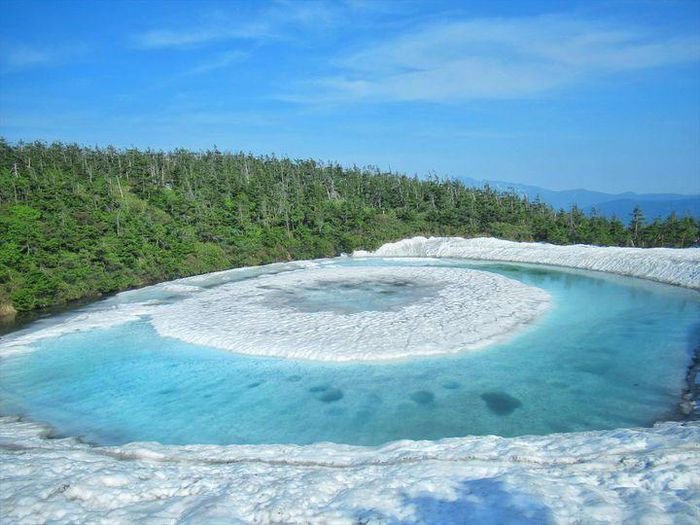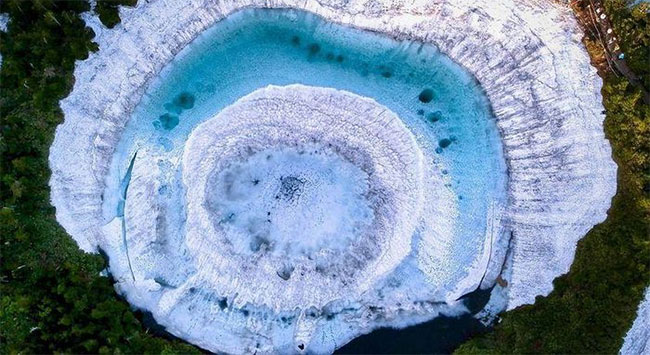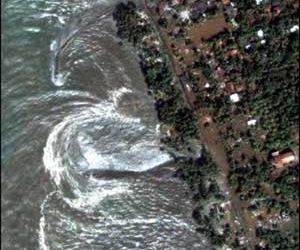Kagami Numa Lake in Japan is often referred to as the eye of the dragon due to its rare beauty in spring when the ice and snow melt.
Kagami Numa is a mythical lake in Japan that transforms into a giant eye each spring after the ice thaws. Consequently, the lake has earned the nickname “Dragon Eye Lake.”

Kagami Numa Lake looks not much different from many other volcanic lakes in the area.
This is one of many lakes at the summit of Hachimantai Mountain, which stretches across Iwate and Akita Prefectures at an elevation of 1,613 meters above sea level.
Located near the summit of Hachimantai in northeastern Japan, surrounded by dense forests, Kagami Numa looks quite similar to many other volcanic lakes in the region throughout the year.
However, from May to early June, the lake transforms into a giant green eye. The name “Dragon Eye” actually emerged in 2016.
Its unique circular shape during this period inspired locals to create a legendary tale about two dragons in love who chose this body of water as their meeting place.


The blue water and the remaining white snow concentrated in the middle of the lake resemble a dragon’s eye.
While many choose to believe in the legend of Kagami Numa Lake rather than scientific explanations, researchers have indeed found a reasonable explanation for its dragon-eye shape.
In spring, as the ice melts, the pressure from the depth of the water causes the snow to concentrate only in the center of the lake, creating a shape that resembles a pupil surrounded by a ring of blue water.
In windy weather, the ice and snow patch in the center rotates, giving the impression of a moving pupil. This is a fascinating natural phenomenon, and it’s no surprise that many people from across Japan and even abroad flock to Hachimantai Mountain in late spring just to witness it in person.
In recent years, photos of the Dragon Eye Lake shared on social media have made Kagami Numa even more famous, turning it into a tourist attraction.
If you visit the area at an inappropriate time, you will only see a lake that looks like any other in the world. However, from May to early June, for just one week, the dragon eye truly appears, leaving everyone who sees it in awe.





















































